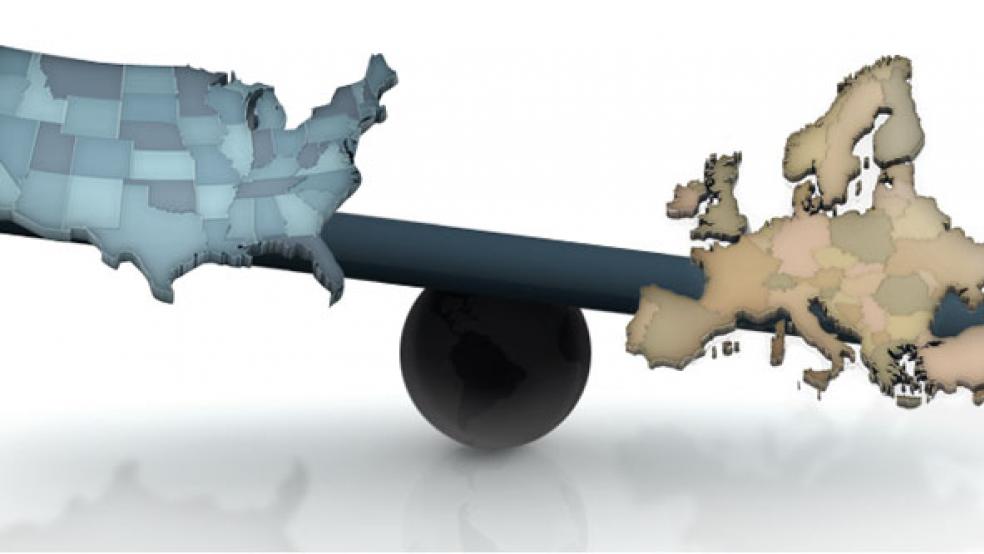Those who favor a free market approach to managing the economy often compare the U.S. to Europe. Europe, it is argued, is much less flexible and dynamic than the U.S. because of its heavier reliance on social insurance, worker protections, and the high tax rates needed to support these programs. Nobel Prize winning economist Edmund Phelps has argued, for example, that “the free enterprise system is structured in such a way that it facilitates and stimulates dynamism while the Continental system impedes and discourages it.” According to Phelps and others, the greater reliance on the free market system in the U.S. results in faster and more robust economic growth.
RELATED: Growth vs. Inflation: Will the Fed Shift Focus?
There is an implied tradeoff here. In the U.S. system, workers have less protection and hence more insecurity than in countries where protection is more prevalent. In return for giving up security, there are two promised benefits. First, it is argued, economic growth will be higher. With less government interference, lower taxes, and unions all but absent, the economy will be free to reach its growth potential.
Second, the economy will be more stable. If a big shock hits the economy, the U.S. will be able to reestablish full employment in new, productive, high-paying jobs much faster than countries with greater social protections and the flexibility inhibiting institutions that come with them.
If these two benefits are large, then trading security for dynamism, flexibility, and higher growth will be more than worth it. So has the economy lived up to these promises?
GAINS WENT, ONCE AGAIN, TO THE TOP
Turning to growth first, there is reason to question whether it’s true that, before the Great Recession, the U.S. outperformed Europe. If it did, and there’s some evidence pointing in this direction, the difference is relatively small and has been diminishing over the last decade. But even if growth was a bit higher in the U.S., the benefits did not go to the households experiencing the greatest increase in insecurity, those at the lower end of the income distribution. Instead, the gains went mostly to those at the top.
RELATED: The Income Gap: A New Look at an Age-Old Problem
What about the other promised benefit of a general free market approach to managing the economy, a better ability to withstand and respond to shocks? Has the U.S. fared better than European countries during the Great Recession?
The U.S. did better than some European countries during the crisis, but worse than others. For example, harmonized unemployment rates from either the Bureau of Labor Statistics or from Eurostat show that the U.S. unemployment rate increased more than most European rates at the onset of the crisis, and that right now the U.S. unemployment rate is higher than in Germany, the Netherlands, Austria, Belgium, Denmark, Finland, and Sweden. But at the same time, the U.S. unemployment rate is quite a bit lower than in Greece, Spain, Ireland, and Portugal, a bit lower than in Italy, and very similar to the U.K.
With such a mixed outcome, it’s difficult to support the claim that the free market approach that began in the 1970s has lived up to the promise of a more dynamic, flexible, faster growing economy. And the case is even harder to make when the fact that the deregulation of the economy that helped to produce the housing bubble is factored in.
But is the social insurance model favored in Europe the answer? Isn’t the fact that Europe is having so much trouble evidence against the idea that the European version of social insurance works?
RELATED: The Socialist Who Can Rattle the Global Economy
Not if the evidence is interpreted correctly. As the summary of this paper from the Institute for the Study of Labor documents, there is very little connection between the size of the welfare state and subsequent sovereign debt troubles. In fact, there is quite a bit of heterogeneity across Europe, and the countries with the largest social welfare states, such as Denmark, Sweden, and Germany fared the best during the recession, while those with the smallest, such as Greece and Italy, are in the most trouble.
A larger welfare state did not lead to a sovereign debt crisis, but it did lead to substantial protection during the recession and much better performance than in the U.S.
I am not arguing that we should mimic the institutions in Europe. Some have worked, some have not, and what works in Europe may not be directly applicable here. But there are lessons to be learned if we look in the right places, e.g., at Danish-type flexicurity and German style job-sharing, and then alter the policies as needed to make them work here. We certainly have room to improve.
Unfortunately, budget pressures will make it difficult to maintain the social insurance programs we have now, let alone improve them, especially since it will mean higher taxes. Nevertheless, political realities aside, it’s very clear that we need more, not less, social protection for households.
Insecurity was much too high during the recession, and it remains too high today. Somehow, we must find a way to do better.





